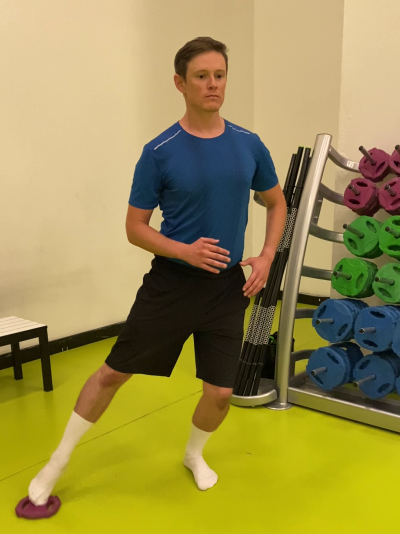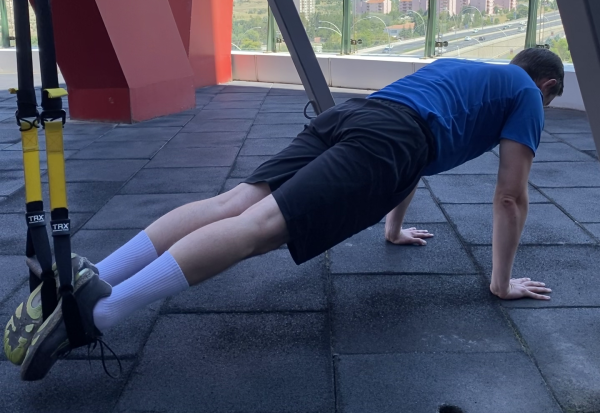Dance, in all its forms, is the combination of technique, artistic expression, and athleticism. As a Ballroom dancer, you already know the importance of technique, because you spend hours in private classes, group classes, and practice sessions working on it! You know that the greatest dancers add their own character to their dancing, expressing themselves through dance. But what about athleticism? Well, that is the physical engine, driving everything.
Athleticism is the ability to use one’s body to move through space, to move other objects, and to hold oneself against force. Typically, when people think of athletes, they think of runners, gymnasts, and swimmers, for example. I want you to add to this list: Ballroom dancers are athletes. Think about the muscular control and stamina, which are needed to make Ballroom dancing work. That is the athleticism of dancing.

So, what is athleticism?
Probably, you have heard lots of terms related to athleticism, such as mobility, power, cardio, speed, coordination, stamina and strength. All of these terms can be confusing, so let’s look at the fundamentals. Firstly, your brain controls your body via the Central Nervous System (CNS). Your ability to perform Ballroom technique comes from your CNS’s ability to control your body. The CNS activates muscles, and the muscles are bound to your skeleton via connective tissues (tendons, ligaments, and fascia). When your brain tells your body to perform a Ballroom figure, the CNS activates the corresponding muscles, the muscles exert forces via the connective tissues, and these forces move your body or hold it in a position. This process is strength and it can be improved with strength training.
At the same time, the muscles need energy and this energy comes from two sources: the anaerobic and aerobic energy pathways. The anaerobic energy pathway provides energy for short periods of powerful activity. On the other hand, the aerobic energy pathway provides energy for longer periods of less powerful activity. For a Ballroom dancer, who typically dances between 90 and 120 seconds, a combination of both pathways is needed. Generally speaking, you can improve the aerobic energy pathway through cardio-vascular training, and you can improve the anaerobic energy pathway through stamina training.

Why dancing has a limit
Just by dancing, you can develop your athleticism. You can improve your strength, cardio-vascular system, and stamina. However, there are limits to how much you can improve, just by dancing. The reason for this is that the body improves at strength, cardio, and stamina depending on the stimulus. For example, if you provide a stimulus by lifting a heavy weight, your body will adapt to be better at lifting that weight (it becomes stronger). If you provide a stimulus by going running, your body will adapt to be better at running in the same way (it conditions the energy pathways).
When dancing, it’s difficult to provide a strong stimulus while maintaining good technique. When thinking about footwork, body positioning, leading and following, line of dance, timing, musicality, and so on, it’s very difficult to push your body in terms of strength, cardio, and stamina. This is why separate athletic training sessions can be so beneficial to Ballroom dancers. By specifically working on your strength, cardio, and stamina, you can be even better on the dance floor.

How can I start athletic training for Ballroom?
Before you go to the gym and start training, there is one more thing you need to be aware of, and that is the goal! As I mentioned above, your body adapts to the stimulus which it receives. For example, if you start a heavy weights programme, you will become better at lifting heavy weights. Now ask yourself? Do you need to lift heavy weights in Ballroom dancing? Generally, the answer is no. Hence, a heavy weights programme does not serve your goals.
Think then about what a Ballroom dancer needs:
- Stability and control from your ankles to your head
- Tall, well aligned posture
- Mobility in your ankles, knees, hips, shoulders and neck
- 90-120 seconds dance stamina
Now think about what a Ballroom dancer doesn’t need:
- To be able to lift really heavy weights
- To build muscle like a bodybuilder
- To jump really high
- To sprint really fast
- To throw or hit things hard!
If you want to do bicep curls, run marathons, or do bodybuilding, that’s fine! Just be aware that these don’t directly translate to better Ballroom dancing. Whatever training programme you choose, make sure that it works towards your goals.
Get strong and get dancing!
About the author
Paul Iliffe is the founder of Ballroom Strength, the athletic training system for Ballroom Dancers. To learn more about Ballroom Strength, visit www.ballroomstrength.com
